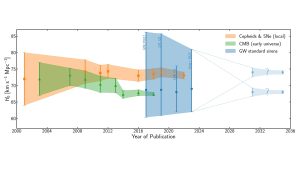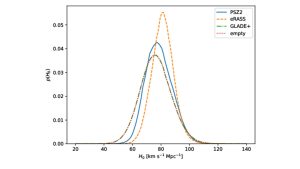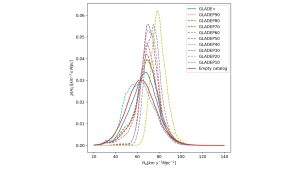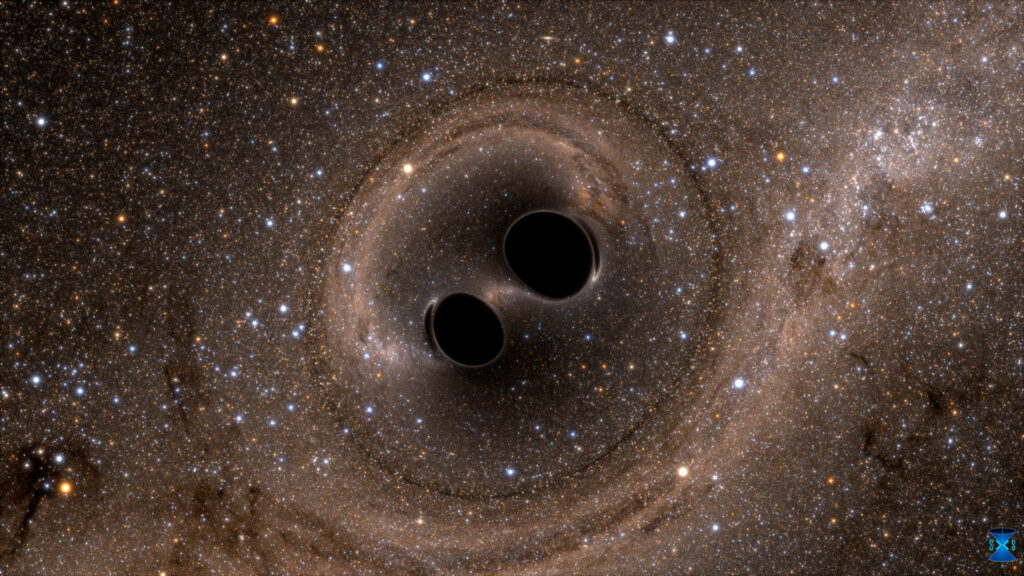From rare Maltem Senger events to large-scale statistical methods, observations of gravitational waves pave the way for a deeper understanding of the universe.
Professor Archisman Ghosh is an assistant professor in the Department of Physics and Astronomy at Ghent University. He specializes in Gravitational Wave (GW) data analysis, focusing on research that focuses on discovering insights into fundamental physics and cosmology from GW observations. His work spans current detectors such as the Ligo-Virgo-Kagra (LVK) network and next-generation observatory such as the Einstein telescope and the space explorer. In recent years, Professor Ghosh and his research group have been investigating how GW observations can help measure the Hubble constant, the velocity at which today’s universe is expanding.
What question is you trying to answer?
It’s still not clear how fast the universe is expanding! Over the past decade, a significant discrepancy has emerged between different measurements of the expansion rate of the universe, which was performed using local probes and inferred from the early universe. This puzzle, known today as the famous Hubble tension, may refer to unknown systematic errors in cutting-edge measurements, or suggest that current cosmological models are incomplete.
First directly detected in 2015, gravitational waves provide an innovative and independent way to investigate the universe. They provide a fresh and complementary way to measure the Hubble constants and other basic parameters of cosmology. Unlike traditional approaches, GW-based measurements do not have the assumption that tension-support existing methods. This opens up powerful opportunities. GWS helps to resolve Hubble’s tensions and illuminate the new physics underlying the evolving universe (Figure 1).

How can gravitational waves help?
Observing gravitational waves is truly unique. Unlike most electromagnetic (EM) observations, usually only sensitive to the overall intensity of light averaged over many phase cycles, GW detectors capture both the amplitude and phase of the signal. This provides a richer source of information.
When merging compact binaries such as black holes and neutron stars, the evolution of signal phase encodes important details about the system, including the mass of the object involved. The amplitude of a gravitational wave decreases with distance (particularly one or more in the square of distance) in a well-understood way, allowing you to directly measure how far the source is. This will make these systems powerful “standard distance indicators.” Or, as invoked in this context, a standard siren.
However, measurement distances are not sufficient to determine cosmological parameters such as Hubble constants. You also need to know the redshift. It’s how much the signal frequency is growing as the universe expands. Redshift is difficult and often impossible to determine from GW data alone. This is where complementary information becomes essential.
Currently there are three main approaches to getting redshift:
Bright Standard Siren: If the GW source has a clearly identified EM counterpart, such as a flash of light from a neutron star merger, redshift can be measured from that EM signal. Spectrum siren: You can statistically infer redshift information by examining how the observed source mass distribution shifts due to redshift. Dark Standard Sirens: If no EM counterparts are observed, but you know which area of the sky in which GW occurred, you can use the galaxy catalog to match the potential host galaxies with their redshifts.
There are other innovative ways to estimate redshifts, but these are likely to be applicable to more sensitive GW detectors in the future.
What kind of measurements have been taken so far?
The merger of binary neutron stars detected by the Ligo-Virgo network GW170817 marked a groundbreaking moment. This was the first Golden Week event with bright EM counterparts observed over multiple wavelengths. This allowed astronomers to quickly identify host galaxies and measure their redshift. Using this information, we obtained the first gravitational wave-based measurement of the Hubble constant, although there is a relatively wide uncertainty of about 14%, when observing about 100 similar events, the accuracy is about 1.4%. However, such multi-penetrating event remains extremely rare. To date, the GW170817 is the only confirmed case.
In the meantime, attention has been focused on the spectrum and dark standard sirens. Most of the previously detected gravitational wave events have no electromagnetic counterparts. From the first three observation runs of the Ligo-Virgo-Kagra collaboration, such events collected around 90 events. The current fourth observation run already has events with over 200 candidates, but no confirmed EM counterparts.
Despite the lack of direct redshift information, these events are not useless. By applying spectral and dark siren methods, cosmological information can be statistically extracted from the increasing detection population. 3,4,5,6 Individual events provide only small parts of the puzzle, but gradually build more clear images and provide a powerful way to contribute to the measurement of Hubble constants without light.
What research does your group focus on?
One of the main challenges of using dark sirens is the serious incompleteness of the galaxy catalog. Most existing catalogs provide reliable redshift information up to Z≈0.25 for the majority of the empty. However, GW sources are already detected from much farther distances, and this range continues to increase as the sensitivity of the LVK detector network increases. To make the most of these farther sources as dark standard sirens, you need to look at alternative Redshift tracers.
My group is actively investigating the use of galaxy clusters and bright galaxies as such alternatives. These objects appear to be significantly higher redshifts, and almost track the underlying material distribution associated with the localization of gravitational wave sources, but this level of accuracy is sufficient. This is because there is relatively large uncertainty in distance measurements from the GWS itself, usually around 10%.

A recent study showed that a Galaxy cluster catalog constructed using the Sunyaev-Zel’dovich effect on cosmic microwave background (CMB) can be improved by 10% and 40% respectively using x-ray surveys (Fig. 2). (Figure 3). These are promising results from early research and are currently developing and rigorously testing these methods to establish them as a robust and viable data analysis pipeline.

Not only is this approach useful, it is essential as LVK networks become more sensitive and next-generation observatory stations like Einstein Telescope (ET) and Cosmic Explorer (CE) come online.
Do you think gravitational waves will resolve Hubble’s tension in the coming years?
We believe that gravitational waves provide valuable and independent information that will help clarify the tensions of Hubble. Importantly, it is not necessary for GW-based measurements to reach 1% accuracy to make them impactful. Even if there is uncertainty at a few percent level, it is possible that we will begin to agree with one side of the current tension.
However, it is difficult to accurately predict when this will occur. The timeline depends on several factors, including the number of detections and the nature of the source. However, progress can be accelerated by increasing the number of GW events that can be used for cosmological reasoning, particularly through methods such as using alternative redshift tracers.
One important task is to identify and control all potential sources of systematic errors and not control statistical uncertainty. This is not a small feat, but the community is already heavily involved in this effort and we are actively contributing.
Gravitational wave measurements are essentially independent of traditional methods. The source of systematic errors in Golden Week observations is completely different from those that affect existing electromagnetic measurements. Additionally, GWS allows direct distance measurements at any redshift without the need for local or high redshift anchors. This means that we can only measure local expansion rates (Hubble constants) and begin directly examining time-dependent Hubble parameters (the full expansion history of the universe).

Future detectors will take us even further. They allow us to explore the “dark age” of the universe – an era from which important electromagnetic signals do not reach us. Gravitational waves are the only messenger that directly investigates this invisible chapter of universe history.
reference
B. F. Schutz, Nature 323 (1986) 310–311. BP Abbott et al. , Nature 551 (2017), no. 7678 85–88. BP Abbott et al. , Astrophys. J. 909 (2021), no. 2218. R. Abbott et al. , Astrophys. J. 949 (2023), no. 276. R. Gray et al. , Jcap 12 (2023) 023. S. Mastrogiovanni et. al. , Phys. Rev. D 108 (2023), no. 4042002. F. Beirnaert et al. ,arxiv: 2505.14077 [astro-ph.CO]. K. Naveed et al. , Arxiv: 2505.11268 [astro-ph.CO].
This article will also be featured in the 22nd edition of Quarterly Publication.
Source link

